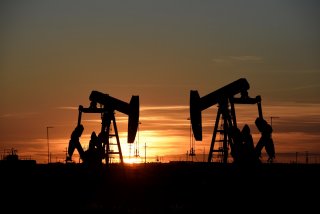Why You Are Paying More For Gas Right Now
The receding of the pandemic has led to a rebound in oil prices, and now a report by OPEC sees oil demand rising this year.
The coronavirus pandemic, among other effects, led to a massive drop in the demand for oil and gasoline. Gas prices plunged last spring, with stay-at-home orders in effect in much of the world, and at one point the future contract for oil even dropped below zero.
The receding of the pandemic has led to a rebound in oil prices, and now a report by OPEC sees oil demand rising this year.
As reported by the Wall Street Journal, the Organization of Petroleum-Exporting Countries (OPEC) said this week that it sees demand for oil rising, due to “stimulus programs and a further easing of Covid-19 lockdown measures, amid an acceleration in the vaccination rollout.”
The cartel raised its demand forecast by 190,000 b/d from its March estimate.
The report follows OPEC’s March decision to boost their collective output by two million barrels a day, a change that will take place over the coming months.
OPEC, which was founded in 1960, consists of thirteen countries, most of which are located in the Middle East, although the organization is headquartered in Vienna. Last year also saw the start of an “oil war” between OPEC member Saudi Arabia and Russia.
According to SP Global, the report stated that global oil demand is expected to “reclaim 96% of 2019 demand.”
“Risks will remain high during 2021, subject to COVID-19 developments, and the pace of reaching herd immunity targets,” the OPEC report said.
“Developments in labor markets, the structural impact of the pandemic on demand, new energy policies and the effectiveness of the large scale monetary and fiscal stimulus measures are factors that will further impact oil demand in the short term,” the report said.
Average gas prices in the United States are 93 cents higher than they were this time last year, although that's mostly because the prices were so artificially low a year ago, during the early days of the pandemic. Gas prices, however, have stabilized in the last two weeks, at an average number of $2.94 per gallon.
The highest average gas price in the country is in the San Francisco Bay area, while the lowest is in Baton Rouge, Louisiana.
“It has been a fairly tame last few weeks at the pump for most areas after a particularly active February and March when prices were screaming higher,” Patrick De Haan, head of petroleum analysis for GasBuddy, said this week on the website’s official blog.
“After surging back then, we’ve seen the price increases fade, and while we haven’t seen much of a decline, prices have been holding near their yearly highs,” De Haan said. “For now, it feels like the risk of seeing the national average climb to $3/gal has been delayed by a recent surge in COVID-19 cases both here and abroad, limiting the upside to gasoline demand, but should things begin to improve, especially as we get closer to the start of the summer.”
Stephen Silver, a technology writer for The National Interest, is a journalist, essayist and film critic, who is also a contributor to The Philadelphia Inquirer, Philly Voice, Philadelphia Weekly, the Jewish Telegraphic Agency, Living Life Fearless, Backstage magazine, Broad Street Review and Splice Today. The co-founder of the Philadelphia Film Critics Circle, Stephen lives in suburban Philadelphia with his wife and two sons. Follow him on Twitter at @StephenSilver.
Image: Reuters

